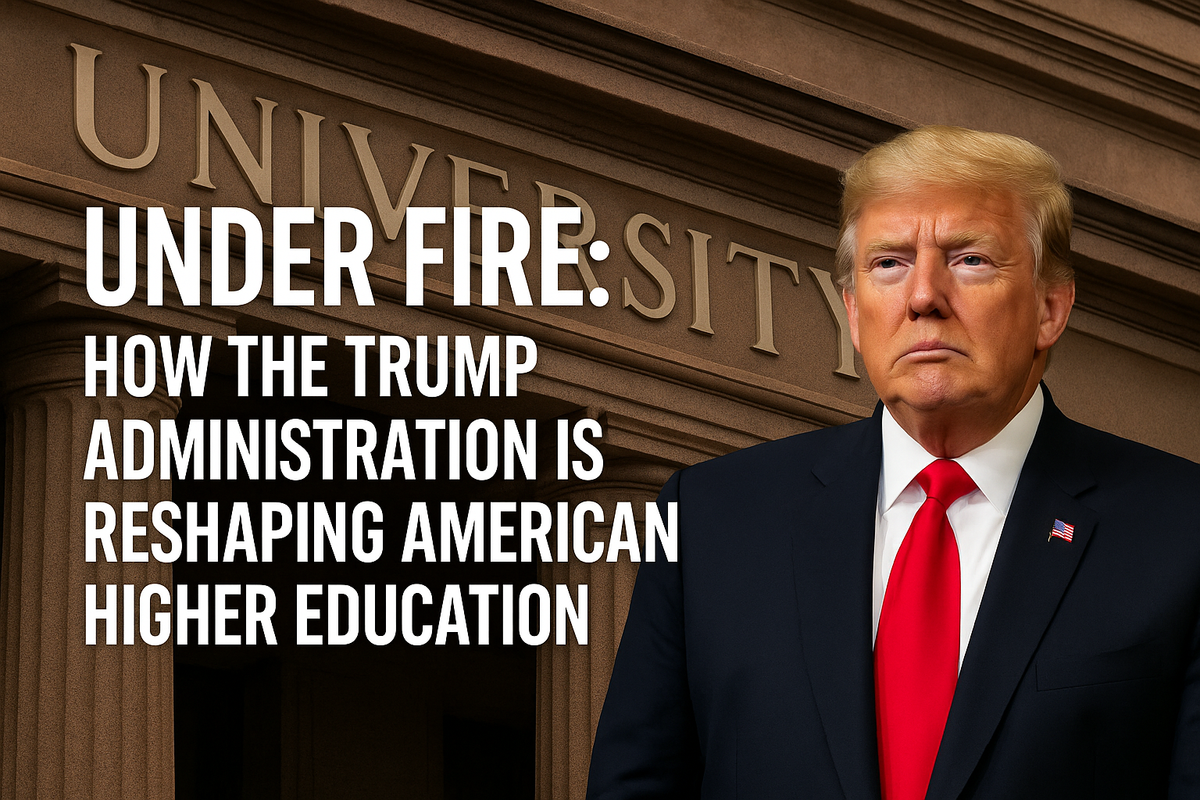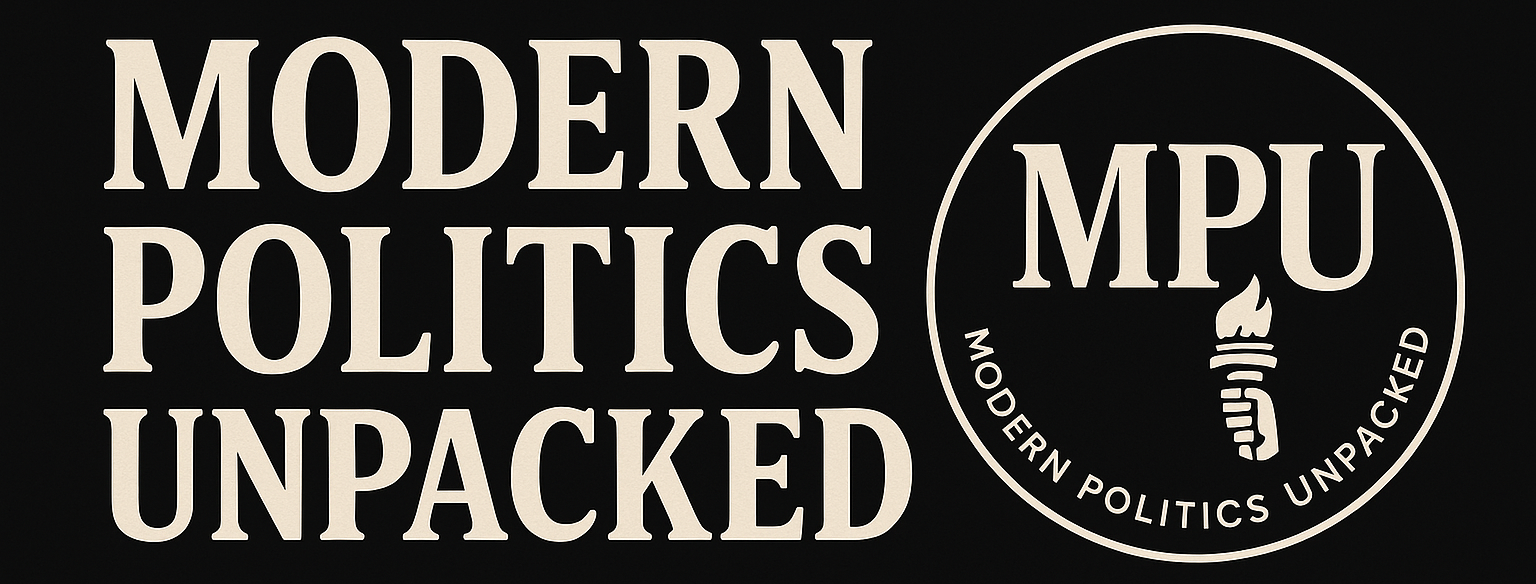Under Fire: How the Trump Administration Is Reshaping American Higher Education

In his second term, President Donald J. Trump has launched an unprecedented assault on America’s higher education system. From targeting elite institutions with funding freezes to dismantling diversity, equity, and inclusion (DEI) initiatives, and revoking international student visas en masse, the Trump administration has positioned universities at the center of a broader ideological battle. What began as isolated policy changes has evolved into a coordinated campaign against what Trump officials call the “liberal academic elite,” shaking the foundations of academic freedom and institutional autonomy.
This article explores the Trump administration’s evolving higher education policy in 2025, detailing the mechanisms of control, the rationale from the Department of Government Efficiency (DOGE), the chilling effect on international students, and how American universities — from Ivy League giants to state-funded research hubs — are fighting back.
1. The Context: Why Trump Is Targeting Higher Education
The administration’s stance against universities is not new, but it has become more aggressive in Trump’s second term. Former criticisms of “radical left indoctrination” have now materialized into a multi-pronged campaign to “defund woke education,” as Trump frequently states at rallies.
Key motivations behind this shift include:
- Political ideology: Universities are seen as bastions of liberalism and therefore political opponents.
- Foreign policy and national security: Alleged foreign influence on campus, especially through Chinese researchers and pro-Palestinian activism.
- Cultural grievances: DEI programs, student protests, and academic curricula are framed as divisive or un-American.
The main vehicle for enforcing compliance has been the Department of Government Efficiency (DOGE), a newly empowered federal agency with sweeping investigative and budgetary powers.
2. Defunding Dissent: Federal Research Grants Frozen or Revoked
In 2025, DOGE and the Trump administration have frozen or revoked over $10 billion in federal research funding across major universities. Institutions affected include:
- Harvard University ($2.26 billion frozen)
- Columbia University
- University of Pennsylvania
- University of Michigan
- Princeton University
- Johns Hopkins University
Criteria for Funding Removal
DOGE has used a mix of legal mechanisms and executive orders to justify defunding. Common allegations include:
- Maintaining “unconstitutional” DEI programs
- Failure to respond to antisemitism or campus unrest
- Enrolling “excessive” numbers of foreign students
- Non-compliance with transparency audits
For example, Harvard’s funding was frozen due to alleged “non-compliance with diversity rollback orders” and for admitting too many international students despite warnings.
“The federal government has a right to ensure taxpayer dollars aren’t used to undermine American values,” said DOGE Director Mark Meadows in a February 2025 briefing.
Universities argue that the defunding decisions are arbitrary, retaliatory, and aimed at suppressing free inquiry and protest.
3. Attacking DEI: Executive Orders to Eliminate Inclusion Programs
Another cornerstone of the administration’s approach has been the dismantling of DEI infrastructure in higher education.
In January 2025, Trump signed an executive order requiring that all institutions receiving federal funds must eliminate DEI-related:
- Offices and staffing
- Training programs
- Curriculum components
- Scholarships and support services aimed at specific identity groups
The University of Michigan, long considered a national leader in DEI, was among the first to comply. It dissolved:
- Its central Office for Diversity, Equity & Inclusion
- The LEAD Scholars Program, which supported underrepresented students
- Cultural centers and bias response teams
“We are complying with federal orders while exploring alternative models for inclusive education,” said Michigan President Santa Ono in a March 2025 statement.
Campus Pushback
- UCLA, facing similar orders, has attempted to rebrand DEI as “community engagement” to retain some programs under different names.
- Stanford University has filed a federal lawsuit claiming the executive orders violate First Amendment protections and the Equal Protection Clause.
Student protests have erupted nationwide. Over 80 campuses reported walkouts, sit-ins, or encampments by March 2025.
4. Visa Crackdowns: International Students in the Crosshairs
A particularly alarming aspect of the administration’s policy is its targeting of international students — a group that has historically contributed over $40 billion annually to the U.S. economy and plays a vital role in scientific research.
SEVIS Terminations Surge
Since January, over 1,500 student visas have been terminated, often without warning. Affected students came from over 240 institutions. Key reasons cited include:
- Attendance at pro-Palestinian protests
- Minor legal infractions (e.g., jaywalking, expired documents)
- “Security concerns” related to national origin
Among the universities with the highest number of terminations:
- Harvard University
- Arizona State University
- Brigham Young University
- NYU
- University of Southern California
“This is not immigration policy. This is a purge,” said Farhana Ahmed, an immigration lawyer representing multiple affected students at Columbia.
Visa revocations are often processed via SEVIS (Student and Exchange Visitor Information System) without prior hearings or appeals.
Institutional Responses
Universities have begun hiring immigration attorneys and setting up legal defense funds for students. For example:
- NYU launched a $2 million legal aid fund
- MIT created an emergency housing and enrollment continuity program for affected students
- Arizona State University published a 45-page report condemning the “unconstitutional profiling” behind the terminations
Despite pushback, Homeland Security Secretary Stephen Miller defended the crackdown: “Foreign students are guests, not citizens. They are here on our terms.”
5. Political and Legal Backlash
The Trump administration’s actions have generated mounting opposition from both state and institutional leaders.
State-Level Resistance
At least 19 state attorneys general, led by New York and California, have filed federal lawsuits challenging:
- Visa revocations
- Executive orders against DEI
- Research grant defunding
In a joint letter, the AGs wrote:
“The federal government is weaponizing its authority to impose an ideological agenda on independent institutions of learning.”
Some Democratic governors have begun allocating state-level emergency funding to plug gaps created by federal cuts.
- Illinois pledged $200 million to the University of Chicago and Northwestern
- California earmarked $500 million for the UC system
University Lawsuits
Several major institutions are suing the federal government, including:
- Stanford, Princeton, and Brown, citing First and Fourteenth Amendment violations
- University of Pennsylvania, alleging breach of grant agreements and unlawful discrimination
These lawsuits are expected to reach the Supreme Court, raising new questions about the future of federal-university relations.
6. The Broader Impact: Innovation, Enrollment, and Reputation
The consequences of this policy shift extend far beyond individual institutions.
Research Delays and Brain Drain
Federal research cuts have stalled:
- Biomedical studies on cancer and neurodegenerative diseases
- AI and robotics research at Carnegie Mellon and MIT
- Environmental science programs at Stanford and UC Berkeley
Many scientists and graduate students are already relocating to Canada, Europe, or Australia, citing a hostile political climate.
“We’re already seeing a slow-motion exodus of talent,” said Dr. Nina Shah, director of research at Johns Hopkins.
Enrollment Declines
- International student applications have dropped 35% year-over-year.
- Domestic minority student enrollment is down 12% at public universities due to the loss of scholarships and DEI support.
- Some smaller liberal arts colleges are projecting closures by 2026 due to budget shortfalls.
7. University-by-University: A Closer Look at the Front Lines
Harvard University
- $2.26B in federal funds frozen
- 34 student visas revoked
- Suing the administration, citing breach of academic freedom
President Alan Garber stated, “We will not compromise our values for federal funding. Harvard’s mission is too important to politicize.”
University of Michigan
- Dissolved its DEI office under federal pressure
- Publicly condemned the orders, but complied to maintain access to research grants
- Student sit-ins ongoing at the Ann Arbor campus
University of Pennsylvania
- One of the first targets of DOGE investigations
- Lawsuit filed to reinstate revoked medical research grants
- Cooperating with a coalition of 17 universities to share legal costs
Columbia University
- Facing investigations for “failure to discipline antisemitic speech”
- Cut funding for student protest groups following DOJ warnings
- Has not yet joined lawsuits but is reviewing legal options
UCLA & UC System
- Massive layoffs in DEI-related staffing
- California state funding used to backfill lost federal dollars
- Actively lobbying Congress for protective legislation
8. Where Do We Go From Here?
The standoff between the federal government and universities shows no sign of slowing. Trump has promised additional executive actions, including:
- Revoking tax-exempt status from “radical” universities
- Mandating “patriotic education” standards in core curricula
- Imposing admissions caps on international students per institution
Meanwhile, advocates of academic freedom, civil liberties, and open inquiry are rallying around a vision of higher education that resists political interference.
“This isn’t just about funding. It’s about the soul of the university,” said AAUP President Irene Mulvey.
Conclusion
In 2025, American higher education finds itself in a defining moment. With billions in funding at stake, thousands of international students in limbo, and a hostile federal administration, universities are being tested not just administratively — but morally.
The Trump administration’s crackdown is not merely bureaucratic; it is ideological, rooted in reshaping what and who American education serves. While some universities have yielded under pressure, many are standing firm, turning to state support, the courts, and public opinion for protection.
The outcome of this clash will have ripple effects across science, global competitiveness, civil liberties, and generational opportunity. What is certain is that the future of American higher education now depends not just on academic excellence — but on the political courage of its institutions and their allies.
Citations:
